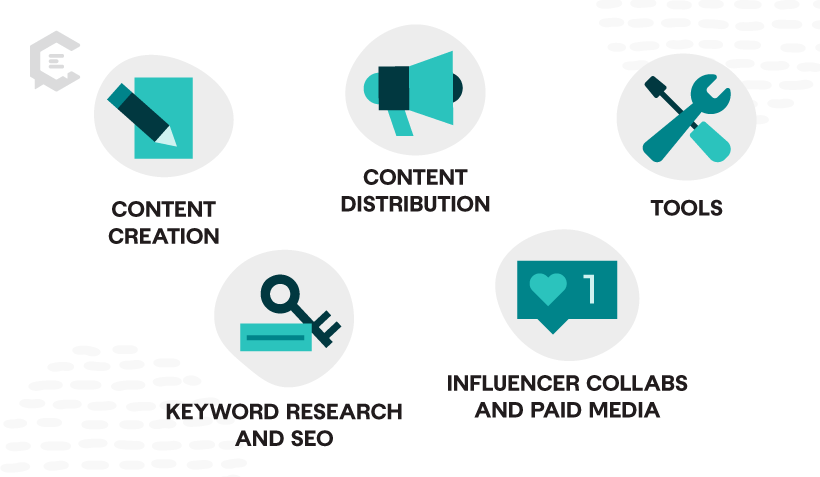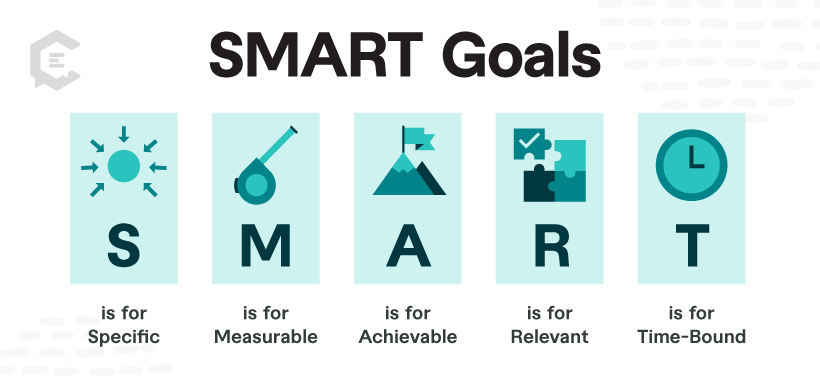Allocating resources and setting a budget that reflects your content marketing goals is like having a GPS for your content strategy — it keeps everything on track.
It ensures you’re not throwing away money but investing where it will make the most difference and get you the best returns.
The question is, how do you budget for success and allocate resources to align with your content marketing goals?

Establishing Your Content Marketing Budget
Budgeting is one of the top skills you need to stay on top of your content marketing game.
Setting your content marketing budget starts with the following.
Understanding the cost components
Consider the following components you need to allocate resources for when establishing your content marketing budget.
- Content creation. Factor in the expenses related to creating top-quality content, including graphic design, content writing, video production, and photography.
- Content distribution. Set a budget for your content promotions through social media ads, paid ads, email marketing, or other channels.
- Tools. Consider the expenses of investing in analytics tools, Content Management Systems (CMS), graphic design platforms, and other software for content production, distribution, and performance tracking or analytics.
- Keyword research and Search Engine Optimization (SEO). Allocate a budget for general and technical SEO services and tools, including researching relevant keywords to optimize your content.
- Influencer collaborations and paid media. Include the costs of potential influencer collaborations and paid promotions in your content marketing budget.
Balancing cost, quality, and quantity
A workable content marketing budget should balance quality, quantity, and cost.
Quality should be a priority in your resource allocation since quality content can drive your strategy and marketing efforts to success.
You should also set realistic quantity targets while considering resource constraints and audience preferences. For instance, you can repurpose relevant content to maximize your investment in one content. However, your efforts to ensure top quality while producing enough content should not strain or exceed your budget.
Aligning Your Budget with Marketing Goals
Strategically allocate your financial resources to activities that contribute directly to achieving your marketing objectives by doing the following.
Identifying and prioritizing goals
Determine and prioritize your content marketing goals with these tips.
- Know your business objectives. Identify your business’s overall goals, including short and long-term objectives. Your marketing goals should directly contribute to these objectives.
- Prioritize goals based on their impact. Assess each marketing goal for its potential business impact and prioritize those that align most closely with your overall business strategy. Consider customer acquisition, revenue generation, and alignment with your long-term objectives.
- Develop a hierarchical structure. Create a hierarchy among your goals since some can be foundational or prerequisites for others. Establish a logical sequence aligning with your business’s growth trajectory.
Allocating funds based on objectives
After identifying and prioritizing your goals, allocate your budget to activities and factors directly contributing to achieving those objectives.
For example, you can allocate funds based on each objective’s priority and significance.
High-priority goals can get a larger share of your budget to ensure adequate support for content marketing activities to help reach those goals.
Allocating Resources Effectively
Effective content marketing resource allocation includes doing the following.
Diversifying investment across various content types
Invest your resources across multiple content types and strategies that can get you the most Return on Investment (ROI).
For instance, understand your target audience, including their behaviors, preferences, and the platforms they frequent.
Use the information to create content that resonates with your target audiences, addresses their pain points, and caters to their preferences, such as the social media platforms they often use.
You can also allocate resources for multimedia and visuals, such as videos and images, to level up your content’s quality — leading to higher engagement, conversions, and returns.
Considering long-term and short-term investments
Factor in your short and long-term investments when budgeting for content marketing.
Your long-term investments can include:
- Search Engine Optimization (SEO) strategies, such as website content optimization, link building, and site structure improvement.
- Building an audience and engaged community by creating forums, keeping an active social media presence, and hosting webinars or live events.
- Brand identity development through consistent content and messaging to foster brand recognition and trust with audiences. If you work with third-party companies, it can include content writing services and strategy development solutions fees.
On the other hand, your short-term investments can include the following:
- Running promotional offers and content, such as time-limited discounts and seasonal campaigns, to quickly generate interest among your target audience and increase sales.
- Paid ad campaigns, including social media ads, Pay-Per-Click (PPC) ads, and others that give your business instant visibility and traffic.
- Product or service updates and launches that aim to create immediate buzz and drive sales.
Setting Realistic Content Marketing Goals
Set realistic content marketing goals to allocate funds effectively and ensure your targets are achievable.
SMART goal setting in content marketing
You can use the S.M.A.R.T. approach to set your content marketing goals.
- S – Specific. Identify and define your content marketing goal. Make it specific to give your marketing team a clear target. For example, instead of a goal like “increasing website traffic,” use “increase organic site traffic by 15 percent within three months.”
- M – Measurable. Set key metrics to measure your goals. It allows you to track the progress of your content marketing initiative and determine success.
- A – Achievable. Consider your capabilities, resources, and historical performance to set attainable content marketing goals.
- R – Relevant. Ensure your content marketing goals align with your broader business objectives.
- T – Time-bound. Determine a specific timeframe for achieving your content marketing goals to give your team and stakeholders a sense of urgency and accountability.
Best Practices for Content Marketing Budgeting
Establish a realistic content marketing budget by implementing the following.
Flexibility and adaptability in budgeting
You should allocate specific or estimated amounts when budgeting.
However, you must also allow for flexibility and adaptability in your budget.
Doing so ensures you can adjust your financial resources to address potential challenges and opportunities that can happen.
For example, set aside a portion of your budget for your experimental content marketing initiatives.
You can try out new content channels, formats, and strategies, analyze the results, and adjust your budget based on the performance and outcome.
Keeping your budget flexible and adaptable also helps your marketing efforts keep up with trends, changing customer demands, and next-decade content marketing predictions.
Leveraging data for informed decision-making
Making your content marketing budgeting decisions based on data helps optimize your resource allocation.
Here are the best ways to leverage data for informed budgeting and decision-making.
- Perform A/B testing on your various content headlines, Calls-to-Action (CTAs), visuals, and other variations. Analyze the results to determine what resonates best with your target audience and refine your approach and budget accordingly.
- Map and analyze each data and touchpoint of the customer journey. It helps you understand how audiences interact with your content at every stage. You can gain insights into optimizing your content delivery and aligning it with customer needs while allocating your resources correctly.
- Measure your content marketing efforts’ ROI. Calculate the cost per acquisition and lead, including other relevant ROI metrics. The data helps you determine the effectiveness of your content marketing budget allocation.
Set Your Budget and Goals for Content Marketing Success
Setting a budget that aligns with your strategic content marketing goals is crucial to your success.
Your budget is your financial compass, ensuring you allocate your resources for optimal content marketing impact and better ROI. Work with reliable companies that provide reliable content writing services and strategy development.
Whether you need help reaching and/or determining your content marketing goals or simply help achieving success, ClearVoice has you covered. Our strategists understand how to weave content into your marketing strategy according to your business’s goals. Speak with an expert content strategist today.








